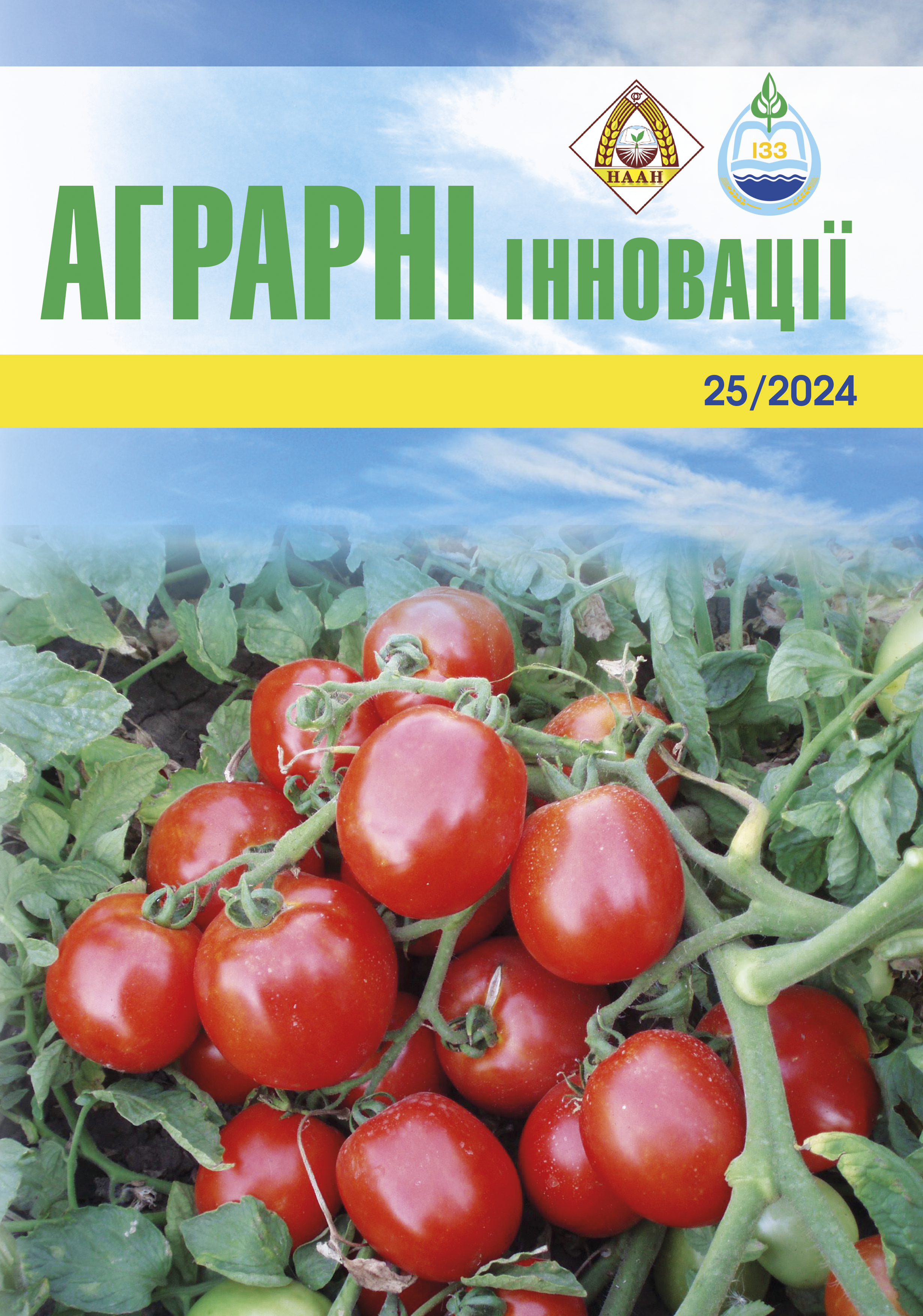Productive and biochemical potential of oil radish leaf mass as a criterion for its possible use as a raw material for biogas production
Abstract
The aim of the study was to evaluate the biogas potential of oil radish from the standpoint of a set of productive and biochemical indicators of the quality of the formed aboveground biomass, based on world experience in determining the role of the main criteria of feasibility in the variant of intermediate (summer) cultivation. Methods. The study was conducted during 2014–2023 on the basis of the experimental field of Vinnytsia National Academy of Sciences on gray forest soils with medium fertility potential. The experiment was replicated four times. The arrangement of the variants was systematic in twotiers. The experiment included determination of biomass yield in dry matter, dynamics of soil cover and a set of basic biochemical parameters determining the suitability of plant material for biogas fermentation based on a systematic approach of factor analysis of multicriteria decision support. Results. The possibility of effective use of oil radish leaf mass formed during the summer (intermediate) sowing period as a potential raw material for biogas production was established. The high bioproductive potential of oil radish in variants of intermediate summer sowing with an average ten-year potential of 2.82 t/ha of dry matter with an achievable yield of 50–60 days after sowing at a level of soil vegetation coverage of 75–80% was proved. It has been established that the biochemical portfolio of plant biomass of oil radish was not inferior to cruciferous crops widely used in the biogas industry, having a long-term C/N ratio of 10–18 units, a complex quality of plant material at the level of 81.0% with a fiber content of 24.0% on a dry basis, and a glucosinolate content of 19.7 μmol/g dry matter. Conclusions. According to the level of bioproductivity and adaptability, taking into account the comparable interannual variation of indicators and variability of hydrothermal parameters of the period of leaf-stem mass formation, as well as basic biochemical parameters in the factor analysis system of multicriteria decision support and its components, a high potential possibility of using the leaf-stem mass of oil radish formed during summer (intermediate) sowing with an average level of attributive normalized criterion score of 0.829 with interannual variability of the indicator was proved.
References
2024. Vol. 11. 8.
2. Long H., Wang S., Wu W., Zhang G. The economicinfluence of oil shortage and the optimal strategic petroleum reserve in China. Energy Reports. 2022. Vol. 8. P. 9858–9870.
3. Bruce D., Bozzetto S., Couturier C., Claudio F., Hilbert J.A., Ong R.G., Richard T., Rossi L., Thelen K.D., Woods J. The potential for expanding sustainable
biogas production and some possible impacts in specific countries. Biofuels, Bioproducts & Biorefining. 2020. Vol. 14. № 6. P. 1335–1347.
4. Kaletnik H., Pryshliak V., Pryshliak N. Public Policy and Biofuels: Energy, Environment and Food Trilemma. Journal of Environmental Management & Tourism. 2020. Vol. 10. № 4 (36). Р. 479–487.
5. Kulichkova G.I., Ivanova T.S., Köttner M., Volodko O.I., Spivak S.I., Tsygankov S.P., Blume Y.B. Plant Feedstocks and their Biogas Production Potentials. The Open Agriculture Journal. 2020. Vol. 14. P. 219–234.
6. Bonnet C., Gaudio N., Alletto L., Raffaillac D., Bergez J-E., Debaeke P., Gavaland A., Willaume M., Bedoussac L., Justes E. Design and multicriteria assessment of lowinput
cropping systems based on plant diversification in southwestern France. Agronomy for Sustainable Development. 2021. Vol. 41. 65.
7. Levavasseur F., Kouakou P.K., Constantin J., Cresson R., Ferchaud F., Girault R., Jean-Baptiste V., Lagrange H., Marsac S., Pellerin S., Houot S. Energy
cover crops for biogas production increase soil organic carbon stocks: A modeling approach. GCB Bioenergy. 2022. Vol. 100. P. 1–15.
8. Słomka A, Pawłowska M. Catch and Cover Crops’ Use in the Energy Sector via Conversion into Biogas– Potential Benefits and Disadvantages. Energies. 2024. Vol. 17. № 3. 600.
9. Chapagain T., Lee E.A., Raizada M.N. The Potential of Multi-Species Mixtures to Diversify Cover Crop Benefits. Sustainability. 2020. Vol. 12. № 5. 2058.
10. Joshi D.R., Sieverding H.L., Xu H., Kwon H., Wang M., Clay S.A., Johnson J.M., Thapa R., Westhoff S., Clay D.E. A global meta-analysis of cover crop response on soil carbon storage within a corn production system. Agronomy Journal. 2023. Vol. 115. P. 1543–1556.
11. Tsytsiura Y. Evaluation of oilseed radish (Raphanus sativus L. var. oleiformis Pers.) oil as a potential component of biofuels. Engenharia Agrícola. 2023. Vol. 43. Special issue. e20220137.






